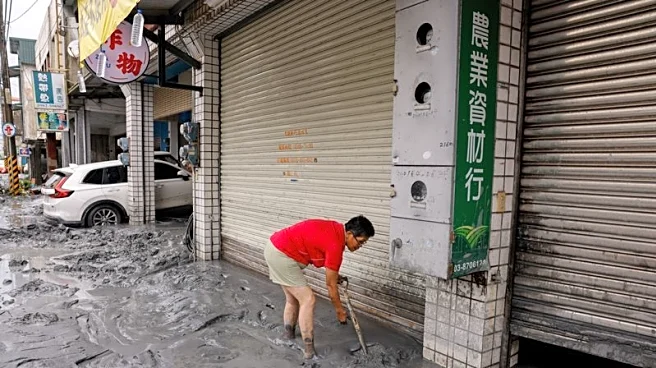What's Happening?
A 5.6-magnitude earthquake struck northwest China's Gansu province early Saturday morning, injuring at least 11 people and causing significant damage to residential structures. The earthquake occurred at 5:49 a.m. in Longxi county at a shallow depth of six miles, according to the Chinese government earthquake center. The epicenter was located approximately 90 miles southeast of Lanzhou, the provincial capital. State media reported that 17 houses were destroyed and over 3,500 residential buildings were damaged, leading to the relocation of about 7,800 residents from Longxi and Zhangxian counties. Emergency workers have been deployed to clear debris and ensure the safety of affected areas.
Why It's Important?
The earthquake's impact on Gansu province highlights the vulnerability of infrastructure in regions prone to seismic activity. The relocation of thousands of residents underscores the immediate humanitarian needs and challenges faced by local authorities in providing shelter and medical care. The event also raises concerns about the preparedness and resilience of communities in earthquake-prone areas, potentially prompting reviews of building codes and emergency response strategies. The broader implications may include increased scrutiny on disaster management policies and the allocation of resources for infrastructure reinforcement.
What's Next?
Authorities are likely to continue assessing the damage and providing aid to affected residents. The focus will be on ensuring the safety and well-being of those displaced, with efforts to restore normalcy in the region. Long-term measures may involve strengthening infrastructure to withstand future seismic events and improving emergency response capabilities. The government may also engage in public awareness campaigns to educate residents on earthquake preparedness and safety measures.
Beyond the Headlines
The earthquake in Gansu province may prompt discussions on the ethical responsibilities of governments to protect citizens from natural disasters. It could lead to increased investment in scientific research to better predict and mitigate the effects of earthquakes. Additionally, cultural dimensions may emerge as communities rally together to support those affected, showcasing resilience and solidarity in the face of adversity.












